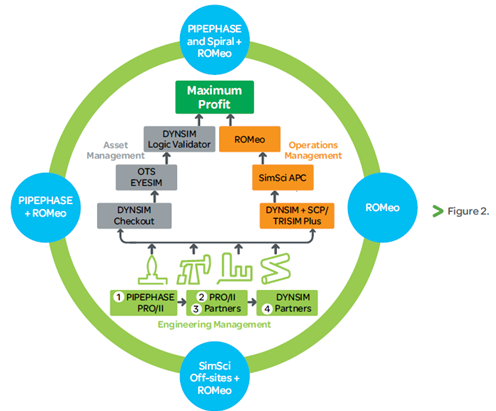Author: Jack Creamer, Market Segment Manager, Pumping Equipment–Industry Business, Schneider Electric
The vibrant upstream oil and gas industry is investing large amounts of capital in the pursuit of new reserves/resource plays, new extraction technology, and advances in operating automation…all with the hopes of improving oil recovery and maximizing production. There is certain risk, but smart companies know that today’s investment will lead to huge payouts in the future. Regardless of the asset type, the number one challenge remains—how do you improve production output and oil recovery factors given the current environment and impending risk? Is there a way to meet this challenge when first considering an asset for development before commissioning a facility?
While better, smarter technology helps address the accelerated pace of asset development, some definite challenges persist. Tougher operating environments and increased risk in extracting today’s oil and gas has pushed capital spending above revenue. Increased economical, geopolitical, and ecological / environmental hurdles drive up both capital and operating costs. An aging and changing workforce significantly adds to the misery. As markets and demand oscillate, the delicate balance of corporate-wide production planning is constantly in flux. To drive growth, maximize profit, and minimize risk, upstream asset development and utilization must be considered holistically.
A Holistic View of Upstream Asset Development and Optimization
Whether the asset is onshore or offshore, conventional or unconventional, oil or gas, considering asset development and utilization holistically can provide many advantages; the largest being economics. This initial view of an individual asset (inner area of Figure 1)—from reservoirs to wells to surface facilities to processing plants—allows operators to plan, manage, and optimize oil and gas production. With each step of Asset and Operations management, the performance and profitability of the operation improves and the supporting teams are able to make better, collaborative, and timelier decisions. The convergence of these two perspectives provides the maximum combined performance of a facility, as measured through real-time economical and operational metrics.
Alongside asset development, executives must be able to view and address problems, objectives, and metrics from the enterprise level (outer circle), treating each asset as interdependent upon the others. The technology and experience available today can help operations better drive profitability for all industrial assets. Only a single end-to-end solution can achieve the objectives of reducing costs, maximizing profit, and minimizing risk.
SimSci Software Solutions for Asset Development
Implementing programs or initiatives is one half of the consideration in developing an asset. The only way to balance return on invested capital with operations excellence, is to use a single set of integrated software tools across the entire asset, starting with the engineering design through operations, and into optimization and planning.
SimSci offers this single set of software tools. As the graphic shows, the arrows are bi-directional to indicate that the software is actually layered on top of each other, thus creating a single user interface for development and execution.
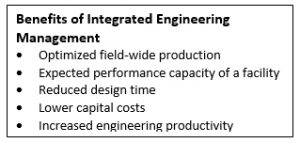 For example, in Engineering Management, pipeline network models are typically designed and optimized in PIPEPHASE®, in conjunction with integrated reservoir modeling capabilities from industry-leading software, such as, GEM (a compositional and unconventional reservoir simulator) or STARS (an advanced processes and thermal reservoir simulator) [See 1 in Figure 2]. This PIPEPHASE model can be incorporated into the process simulator PRO/II® to create a single model for designing, rating, and simulating the surface facility or plant while preserving the integrity of the subsurface details. And/or use the same network model in ROMeo® to optimize the entire asset using real-time data.
For example, in Engineering Management, pipeline network models are typically designed and optimized in PIPEPHASE®, in conjunction with integrated reservoir modeling capabilities from industry-leading software, such as, GEM (a compositional and unconventional reservoir simulator) or STARS (an advanced processes and thermal reservoir simulator) [See 1 in Figure 2]. This PIPEPHASE model can be incorporated into the process simulator PRO/II® to create a single model for designing, rating, and simulating the surface facility or plant while preserving the integrity of the subsurface details. And/or use the same network model in ROMeo® to optimize the entire asset using real-time data.
Spiral® CrudeSuite, SimSci’s feedstock evaluation and data management, planning and scheduling set of tools, is also fully integrated into PRO/II and ROMeo [See 2 in Figure 2]. It offers quick and easy access to comprehensive assay libraries and crude oil knowledge management systems. This provides an update of full assays from limited samples and monitoring of crude quality, along with the ability to compare stream data for blending to pipeline, tank/terminal, and refinery specifications.
In basic engineering, SimSci enhances its rigorous design and rating capabilities through its partnerships with HTRI, which provides advanced heat exchanger design capabilities, and Koch-Glitsch and Sulzer, which provides column design. These work seamlessly within PRO/II [See 3 in Figure 2]. As well, in detailed engineering, SimSci has joined forces with Nomitech to deliver costing software and with Intergraph to develop software for case management and P&ID development [See 4 in Figure 2]. Being able to consider economics in sync with the engineering design provides an unmatched advantage, early on in the evaluation process.
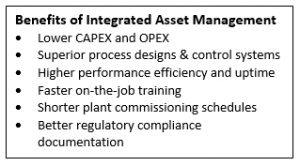 The single integrated model continues on from here. Engineering will use DYNSIM® to validate these process designs, and test safety and control schemes. They will then pass these models off to Maintenance during the Asset Management phase to conduct startup commissioning, operator training, and safely operate the facility. This can be accomplished via the Operator Training Systems (OTS), EYESIM™, Logic Validator, SCP™ and TRISIM Plus™ software tools, to which DYNSIM is the base. A common base of tightly integrated products ensures a moderate learning curve, transferable skills, and reduced commission and start-up times. Plant safety is sustained while driving high economic efficiency and productivity.
The single integrated model continues on from here. Engineering will use DYNSIM® to validate these process designs, and test safety and control schemes. They will then pass these models off to Maintenance during the Asset Management phase to conduct startup commissioning, operator training, and safely operate the facility. This can be accomplished via the Operator Training Systems (OTS), EYESIM™, Logic Validator, SCP™ and TRISIM Plus™ software tools, to which DYNSIM is the base. A common base of tightly integrated products ensures a moderate learning curve, transferable skills, and reduced commission and start-up times. Plant safety is sustained while driving high economic efficiency and productivity.
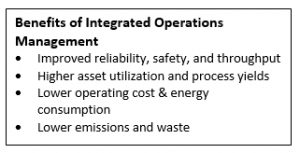 The same dynamic models can be passed off to Production during Operations Management to advance control system design and trouble-shooting, hooking in SCP, TRISIM Plus, or other vendors as required. ROMeo, together with SimSci APC™, can be then used to determine the optimal operating parameters for a process to deliver the targeted operational results while subject to feed, safety, environmental and other constraints. This unified optimization solution can monitor performance, control and obtain peak performance to deliver the maximum benefit in large and complex process plants where the scale and complexity requires formal solutions.
The same dynamic models can be passed off to Production during Operations Management to advance control system design and trouble-shooting, hooking in SCP, TRISIM Plus, or other vendors as required. ROMeo, together with SimSci APC™, can be then used to determine the optimal operating parameters for a process to deliver the targeted operational results while subject to feed, safety, environmental and other constraints. This unified optimization solution can monitor performance, control and obtain peak performance to deliver the maximum benefit in large and complex process plants where the scale and complexity requires formal solutions.
SimSci Software Solutions for Enterprise-wide Optimization
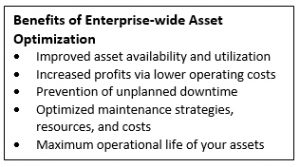 To navigate the business through uncertain conditions and steer it towards future growth, companies must focus on synchronizing strategy with execution in real-time. Success in this area depends on several strategic planning areas with the greatest return on investment when considering the optimization of multiple assets.
To navigate the business through uncertain conditions and steer it towards future growth, companies must focus on synchronizing strategy with execution in real-time. Success in this area depends on several strategic planning areas with the greatest return on investment when considering the optimization of multiple assets.
The same tools used to design, operate, and optimize an individual asset can be used for the asset-wide optimization of production, energy, inventory, and flow. This common base eliminates the need for rebuilding models, re-entering data, or additional training. The SimSci ROMeo real-time optimization tool is the underlying powerhouse product for driving these optimization initiatives. It is often used across the entire enterprise for RTO applications, plant data reconciliation applications, and asset monitoring.
For Production Planning, the composite solution is based on the ROMeo framework where the PIPEPHASE model is embedded as a unit operation in, and the Spiral CrudeSuite library is accessed directly from, the ROMeo model. The advanced blending functionality Spiral provides is only augmented by ROMeo’s real-time optimization capabilities, and the flexibility to evaluate blends for any pipeline, tank and refinery specification is unparalleled. ROMeo is used to solve and optimize this integrated asset model.
For Energy Optimization, ROMeo provides model-based real-time measurement of energy accounting and key performance indicators at each consumption, production, transfer, import or export point in the plant. This allows for real-time updates of critical production, feedstock, safety, and environmental variables that are directly or indirectly impacted by energy and provide a balanced approach to energy cost management across a production operation.
For Inventory Management, SimSci Off-sites provide accurate, reliable and accessible inventory and movement information, movement automation and off-line/on-line multi-blend optimization. The integration between Off-sites and ROMeo allows crude blend properties to be passed directly between the two. Blend data from Off-sites replaces data as input to ROMeo for enhancing the accuracy of the optimization model. ROMeo optimization data is then passed back to Off-sites. Increased automation and information management reduces quality giveaway, avoids reprocessing and improves accounting accuracy. Results from this solution include reduced product cost and faster time to cash, while increasing customer satisfaction at the same time.
For Flow Assurance, the power of coupling PIPEPHASE, which assists in network assurance by accurately modeling multiphase flow in single pipes or in complex networks, with ROMeo, which optimizes conditions given real-time data and its optimization capabilities, provides a strategic advantage for planning the flow of all fluids used and transported in the extraction and processing of oil and gas.
As is evident, ROMeo provides numerous performance-enhancing solutions with the ability to view what is happening at any specific plant now and make appropriate and timely business decisions. This single integrated solution is critical for optimal operation and allows customers to remain competitive in changing economic times.
Business Value Delivered
SimSci offers the upstream oil and gas business an advanced, real-time performance-based software solution for complete asset modeling. The solution provides asset developers and operators a single continuous view of their assets, from the wells through to the processing facilities, and from engineering through operations, thus empowering them to plan, manage, and optimize oil and gas production. This fully integrated model provides a common interface for field planning, operations decision support, and real-time asset management.
The success of this solution has been shown to improve profitability by increasing production and oil recovery, reducing costs, and mitigating risk.
About the Author
Jack Creamer is Schneider Electric Segment Marketing Manager – Pumping Equipment, based in the United States. Mr. Creamer has more than 30 years in the Electrical Industry, and has been involved for 10 years in the Pumping Industry. He is involved in key industry organizations such as the Hydraulic Institute and Submersible Wastewater Pump Association, where he holds both Committee Chair and Board level positions. In his time in the Pump industry, he has help Schneider create numerous solutions that both enhance pumping efficiency and address issues such as maintenance and downtime.


